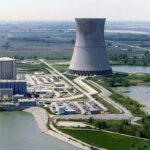By M. V. RAMANA MARCH 10, 2021
In December 2020, Natural Resources Minister Seamus O’Regan released an action plan for small modular nuclear reactors (SMRs), which assured us that SMRs will enable, among other things, “a net-zero economy by 2050.” Earlier, O’Regan also stated: “We have not seen a model where we can get to net-zero emissions by 2050 without nuclear (power).” How does one evaluate such assertions?
The philosopher of science, Karl Popper, emphasized that a single negative instance is sufficient to invalidate a theory. Consequently, O’Regan’s second assertion is easily falsified: there are a number of researchers who have developed pathways for purely renewable-energy-based systems, with zero emissions. Examples include one for North America and a global one.
Germany offers an example of how carbon emissions (and use of coal) can be reduced without relying on nuclear energy. Thanks to its decision to phase out nuclear power, it has expanded renewable energy sources rapidly, resulting in its carbon emissions declining by more than 40 per cent from 1990 levels. In contrast, Canada’s emissions have increased substantially since 1990.
The potential role of an energy technology in climate mitigation depends on two important parameters: cost and time. Time is critical; the Intergovernmental Panel on Climate Change and other international bodies have warned that to stop irreversible damage from climate change, emissions have to be reduced drastically by 2030. That is the yardstick to evaluate technologies.
Nuclear power doesn’t even begin to contribute within that time frame. A nuclear plant takes around a decade to go from start of construction to producing electricity. But one can’t start construction of a nuclear reactor immediately. The requisite planning and raising the finances might take another decade.
How about SMRs? These will take even longer because the SMRs being developed in Ontario and New Brunswick are just conceptual designs. To develop full-fledged constructible designs is time consuming and expensive. NuScale, the leading U.S. design, has been under development for nearly two decades; it is still not licensed for construction because the Nuclear Regulatory Commission has identified various safety concerns. All this after nearly US$1-billion has been spent on the design.
The second parameter influencing climate mitigation potential of a technology is cost. Nuclear power, today, is about the most expensive way of generating electricity. The only reactors being built anywhere in North America are currently forecast to cost US$29-billion up from a promised US$14-billion. In the United States, home to the most nuclear plants globally, it costs more than US$10,000 per kilowatt of generating capacity to construct a new nuclear plant, roughly eight to 10 times the cost of wind and utility scale solar power plants, respectively.
Unfavourable economics has driven nuclear power’s declining share in global electricity generation, from 17.5 per cent in 1996 to around 10 per cent in 2019. It is also why no nuclear power plants have been built in Canada since the 1990s. The last effort to construct new reactors was abandoned in 2009, once the price tag became clear.
Can SMRs change this economic picture? For both engineering and historical reasons, the answer is no; electricity from SMRs will only be more expensive. The engineering reason is that constructing an 800-megawatt reactor requires much less than four times the amount of concrete or steel used in a 200-megawatt reactor. Thus, the per unit cost of SMRs is much higher than large nuclear plants, which, in turn, are much more expensive than solar and wind.
Historically, such economies of scale are what drove countries around the world to move from smaller to larger reactors. An example is India. Many small reactors built in the United States shut down early because they couldn’t compete economically.
SMR advocates claim that costs would come down rapidly through repeated manufacture in factories and learning. But the evidence for these effects is slim to non-existent. Historically, costs of nuclear plants have gone up, not down, with more experience. Factory manufacture has also not helped reduce the costs of the reactors under construction in the United States.
The bottom line is that the math on SMRs just doesn’t add up. Investing in SMRs is a waste of time and money.
M.V. Ramana is the Simons Chair in Disarmament, Global, and Human Security and director of the Liu Institute for Global Issues at the School of Public Policy and Global Affairs, University of British Columbia, and a scholar at the Peter Wall Institute for Advanced Studies.

